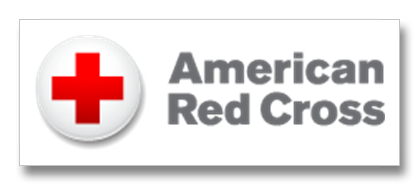As the Northeast states of US brace for hurricane Sandy, our good wishes and prayers go to all who will be impacted by this mega storm, the worst in last 100 years.
Here is a checklist from the Red Cross of what you should do before, during, and after a hurricane as well as information on flooding and power outages, the two most likely effects of the storm. 
BEFORE:
A hurricane is on its way. What do I do?
- Listen to a NOAA Weather Radio for critical information from the National Weather Service (NWS).
- Check your disaster supplies. Replace or restock as needed.
- Bring in anything that can be picked up by the wind (bicycles, lawn furniture).
- Close your windows, doors and hurricane shutters. If you do not have hurricane shutters, close and board up all windows and doors with plywood.
- Turn your refrigerator and freezer to the coldest setting. Keep them closed as much as possible so that food will last longer if the power goes out.
- Turn off propane tank.
- Unplug small appliances.
- Fill your car's gas tank.
- Create an evacuation plan with members of your household. Planning and practicing your evacuation plan minimizes confusion and fear during the event.
- Find out about your community's hurricane response plan. Plan routes to local shelters, register family members with special medical needs and make plans for your pets to be cared for.
- Obey evacuation orders. Avoid flooded roads and washed out bridges.

Standard homeowners insurance doesn't cover flooding. It's important to have protection from the floods associated with hurricanes, tropical storms, heavy rains and other conditions that impact the U.S. For more information on flood insurance, please visit the National Flood Insurance Program Web site at www.FloodSmart.gov.
What supplies do I need?
- Water-at least a 3-day supply; one gallon per person per day
- Food-at least a 3-day supply of non-perishable, easy-to-prepare food
- Flashlight
- Battery-powered or hand-crank radio (NOAA Weather Radio, if possible)
- Extra batteries
- First aid kit
- Medications (7-day supply) and medical items (hearing aids with extra batteries, glasses, contact lenses, syringes, etc.)
- Multi-purpose tool
- Sanitation and personal hygiene items
- Copies of personal documents (medication list and pertinent medical information, proof of address, deed/lease to home, passports, birth certificates, insurance policies)
- Cell phone with chargers
- Family and emergency contact information
- Extra cash
- Emergency blanket
- Map(s) of the area
- Baby supplies (bottles, formula, baby food, diapers)
- Pet supplies (collar, leash, ID, food, carrier, bowl)
- Tools/supplies for securing your home
- Extra set of car keys and house keys
- Extra clothing, hat and sturdy shoes
- Rain gear
- Insect repellent and sunscreen
- Camera for photos of damage
- Continue listening to a NOAA Weather Radio or the local news for the latest updates.
- Stay alert for extended rainfall and subsequent flooding even after the hurricane or tropical storm has ended.
- If you evacuated, return home only when officials say it is safe.
- Drive only if necessary and avoid flooded roads and washed out bridges.
- Keep away from loose or dangling power lines and report them immediately to the power company.
- Stay out of any building that has water around it.
- Inspect your home for damage. Take pictures of damage, both of the building and its contents, for insurance purposes.
- Use flashlights in the dark. Do NOT use candles.
- Avoid drinking or preparing food with tap water until you are sure it's not contaminated.
- Check refrigerated food for spoilage. If in doubt, throw it out.
- Wear protective clothing and be cautious when cleaning up to avoid injury.
- Watch animals closely and keep them under your direct control.
- Use the telephone only for emergency calls.
- Secure double entry doors at the top and the bottom.
- Strengthen existing garage doors to improve the wind resistance, particularly double- wide garage doors.
- Protect windows with permanent storm shutters or one-half inch marine plywood that is pre-cut to fit your doors and windows.
- Clear loose and clogged rain gutters and downspouts to prevent flooding and unnecessary pressure on the awnings.
- Select trees that are not as subject to uprooting to replace damaged ones. A gardening or landscaping professional can give you excellent advice.
- Identify a place to store lawn furniture, toys, gardening tools and trash cans that is away from stairs and exits to prevent them from being moved by high winds and becoming missiles.
- Ensure roof sheathing is properly installed.
- Ensure end gables are securely fastened to the rest of the roof.
- Fasten the roof to the walls with hurricane straps.
- Elevate your home if it is near the coast and subject to flooding from storm surge.
AFTER:
What do I do after a hurricane?As you rebuild:
Ask a professional to:
Let Your Family Know You're Safe:
If your community has experienced a disaster, register on the American Red Cross Safe and Well web site to let your family and friends know about your welfare. You may also call 1-866-GET-INFO to register yourself and your family.
Remember:No preparation is too much!
theFundooGeek recommended reading :



 Newer Posts
Newer Posts
 Home
Home



